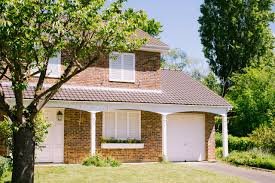Homeowners Insurance in High-Risk Zones: What’s Covered in the USA?

Owning a home in a high-risk area—whether it’s prone to hurricanes, wildfires, floods, or earthquakes—can bring peace, pride, and peril. One major concern for homeowners in these areas is insurance coverage. So, what exactly does homeowners insurance in high-risk zones cover in the USA?
In this guide, we’ll walk you through what standard policies include, what additional coverage you might need, and how to protect your investment if you live in or plan to move to a high-risk region.
What Is a High-Risk Zone in Homeowners Insurance?
A high-risk zone is an area classified by insurance companies and government agencies as having an elevated risk of natural disasters or other hazards. These areas may be vulnerable to:
- Flooding
- Hurricanes
- Tornadoes
- Earthquakes
- Wildfires
- Crime or vandalism
FEMA (Federal Emergency Management Agency) and private insurers use data to map and assess risk. Homeowners in high-risk areas may face higher premiums, limited coverage options, or even denied coverage from traditional insurers.
Does Standard Homeowners Insurance Cover Natural Disasters?
Most standard homeowners insurance policies (HO-3 in the USA) cover a broad range of perils—but not everything. Here’s what is typically included and excluded:
✅ Covered:
- Windstorms (in most states, but may have a separate deductible)
- Fire and smoke damage
- Hail
- Theft and vandalism
- Liability (injury on your property)
- Water damage from plumbing (not flooding)
❌ Not Covered (Typically):
- Floods
- Earthquakes
- Landslides
- Mold from long-term damage
- Maintenance-related issues
If you live in a high-risk area, you’ll likely need additional riders or separate policies to be fully protected.
Keywords used:
- homeowners insurance in high-risk zones
- what’s covered in high-risk insurance policies
- flood insurance USA
- wildfire insurance coverage
Types of Additional Insurance for High-Risk Zones
1. Flood Insurance
Flood damage is NOT covered by standard homeowners insurance. If you live in a flood zone, you’ll need a separate flood insurance policy, often provided through the National Flood Insurance Program (NFIP) or private carriers.
- NFIP coverage maxes out at $250,000 for the building and $100,000 for contents.
- Private flood insurance may offer higher limits.
2. Earthquake Insurance
If you live in California or other seismically active areas, earthquake insurance is essential.
- Offered as a separate policy or rider.
- Includes building, personal property, and loss of use coverage.
- High deductibles are common (10–20%).
California Earthquake Authority →
3. Wildfire Insurance
While most policies cover fire damage, homes in wildfire-prone areas like parts of California, Oregon, and Colorado may face:
- Non-renewals by private insurers
- Higher premiums
- Fire zone surcharges
In some states, like California, residents may be forced to get coverage through state-backed FAIR Plans.
California FAIR Plan Association →
4. Hurricane and Windstorm Coverage
In coastal states, windstorm damage might require a separate deductible or an endorsement.
- States like Florida, Texas, and Louisiana often have state windstorm associations.
- Some insurers require storm shutters or roof retrofits for coverage.
How Are Premiums Calculated in High-Risk Areas?
Living in a high-risk zone significantly affects your homeowners insurance premium. Insurers evaluate:
- Location risk maps (FEMA, NOAA, and crime stats)
- Claims history in your ZIP code
- Construction materials (fire-resistant or flood-resistant?)
- Proximity to fire stations and hydrants
- Protective features (alarm systems, sump pumps, elevation)
Expect to pay 25% to 100% more for the same policy if you live in a high-risk area compared to a low-risk zone.
Tips to Lower Homeowners Insurance in High-Risk Areas
While you can’t control the weather, you can take steps to reduce your risk—and your premiums:
✅ Mitigation Tips:
- Install impact-resistant windows and roofing
- Elevate your home in flood zones
- Add sump pumps and backflow valves
- Use fire-resistant landscaping
- Install a monitored security system
✅ Shop Around:
Use comparison tools like Policygenius or work with an independent insurance broker to find the best coverage.
What Happens If You Can’t Get Insurance?
If private insurers deny you due to high risk, each state offers last-resort options through government-backed insurance pools like:
- FAIR Plans – Fire insurance in high-risk zones
- TWIA (Texas Windstorm Insurance Association)
- LA Citizens (Louisiana Citizens Property Insurance)
- California FAIR Plan
These policies tend to have limited coverage and higher rates, but they ensure no homeowner is left without some protection.
Frequently Asked Questions
Q: Can I be denied homeowners insurance because of my location?
A: Yes. Insurers can legally decline coverage in high-risk zones. In that case, state-backed programs or specialty insurers may be your only option.
Q: Do I need flood insurance if I’m not in a high-risk flood zone?
A: Over 20% of flood claims come from moderate or low-risk areas. If you live near water, flood insurance is still smart.
Q: Will a mortgage lender require special insurance?
A: Yes. Lenders in high-risk areas may require flood or windstorm insurance before approving your mortgage.
Final Thoughts: Is Homeowners Insurance in High-Risk Zones Worth It?
Absolutely—homeowners insurance is crucial, especially in high-risk zones. But it’s important to understand that standard coverage has limits, and you’ll likely need additional policies to fully protect your property.
In 2025, with climate change increasing the frequency of disasters, more homeowners are finding themselves in zones once considered safe. Being proactive about risk mitigation, policy upgrades, and shopping around can help you stay covered—without overpaying.
Don’t wait for a disaster to expose your coverage gaps. Act now and make sure your policy truly protects your home.




